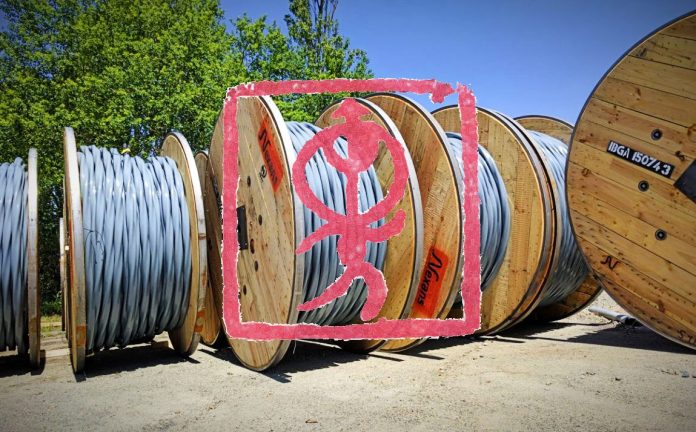The (real) IoT market is both highly fragmented and deeply incestuous. This is not news, of course; it is to be expected for a market that is competitive and collaborative at the same time, and which coalesces systematically and regularly around new innovations. It is well illustrated, currently, by the runners and riders in the race to rescue ailing French IoT outfit Sigfox, and also in their respective interplay with the new satellite IoT market.
Take the cases of UnaBiz and Groupe ZeKat, for instance; both have expressed an interest in acquiring Sigfox, as the auction deadline closes this week. It is possible even that they will join together in a bid, and likely for sure that they have discussed such a course. They have both, also, signed recently with Kinéis, a France-based satellite IoT spin-off from the French Space Agency (CNES), with a view to provide satellite IoT for the logistics industry (see here for the UnaBiz writeup on Kinéis).
They are both, as well, on the acquisition trail. UnaBiz announced (today; just posted) it has snapped up Sensatag, a five year-old Dutch provider of low-power IoT solutions with a decent line in Sigfox trackers. ZeKat, based in the Loire Valley in western France, has also announced (a couple of days ago) it has acquired ffly4u, which makes “embedded intelligence on geolocation devices”, and is, coincidentally, a Sigfox neighbour in Toulouse.
The ffly4u fee is undisclosed. There appears to be a slight rebranding, and a reversal of sorts in the takeover. A statement said: “Today, ffly4u integrates Groupe ZeKat and becomes fly4u.” It is possible a preposition has been lost in translation, and it should read: ffly4u integrates into Groupe ZeKat. ZeKat said the deal makes it a “benchmark in the IoT market”, and allows it to “integrate the European panorama of trusted AI start-ups”. Again, the translation may be fallible.
The reference in the ffly4u/fly4u statement to “embedded intelligence” makes it sound like it is in the tinyML game, producing miniaturised machine learning (ML) systems and software for low-power wide-area (LPWA) IoT tracking devices. Its website says it “integrates artificial intelligence (AI) and ML technologies into devices” for the industrial and supply chain (Industry 4.0 and “Supply Chain 4.0”) sectors. It works with LoRa as well.
Whether or not it is miniaturised ML-tech, there is clearly some analytics going on. The sweet spot for ffly4u/fly4u is connecting reusable mobile assets on industrial sites; its specialism is connected cable drums (see main image) – industrial-sized spools for carrying various types of electrical wires. The firm, founded in 2015, has pioneered the use case, it claims. Power cable maker Nexans has taken the solution in France, Belgium, Germany, Switzerland, and the UK.
Zekat Group has two business pursuits; it makes electronic boards (“both big and small”), including for autonomous tram systems, and develops IoT solutions via its Ercogener unit for the manufacturing, transportation, and agriculture markets. It is privately owned (by founder and chief executive Pascal Denoël), and posted revenue of €24 million last year; it has been with Sigfox for five years, but has just shown a hybrid Sigfox-LoRa unit at CES in Las Vegas.
It has been talking up an ‘internet of logistics’ (IoL) offer, covering “monitoring of mobile assets (dumpsters, trailers, containers) throughout the supply chain, from production sites and warehouses to the final delivery point”. It has received investment of €4m (“the support of the French Stimulus”) for its IoL endeavours, it said. The new arrangement with Kinéis feeds into this proposition, also, to plug BLE-based sensors into satellite backhaul system.
ZeKat said: “The first goal of this partnership is to develop a BLE gateway to Kinéis, to collect data from multiple sensors and transmit them easily and everywhere. Subsequently, Kinéis connectivity will be integrated into our solutions and combined with other technical solutions such as LTE-M and NB-IoT or [non-cellular) LPWA networks. This combination [will] allow [us] to optimise communication coverage.”
Kinéis was created in 2018 by CNES and CNES-subsidiary CLS (Collecte, Localisation, Satellites) with the purpose to “democratise” the latter’s ARGOS environmental data system to the IoT market. CLS owns seven satellites in low-earth orbit (LEO); it has two more scheduled to be deployed in 2022, and a plan to launch a 25-nanosatellite constellation in 2023 from New Zealand. Kinéis said a 30-strong fleet will provide “near real-time connectivity”.
The ARGOS satellite monitoring system, now in the hands of Kinéis, started in 1978 as a collaboration between CNES and the US National Oceanic and Atmospheric Administration (NOAA), with support also from NASA. It has provided environmental monitoring and surveillance data about the Earth since 1986. The move into the IoT market, to leverage its satellite-based localization data, and extend to low-power satellite connectivity, is more recent.

